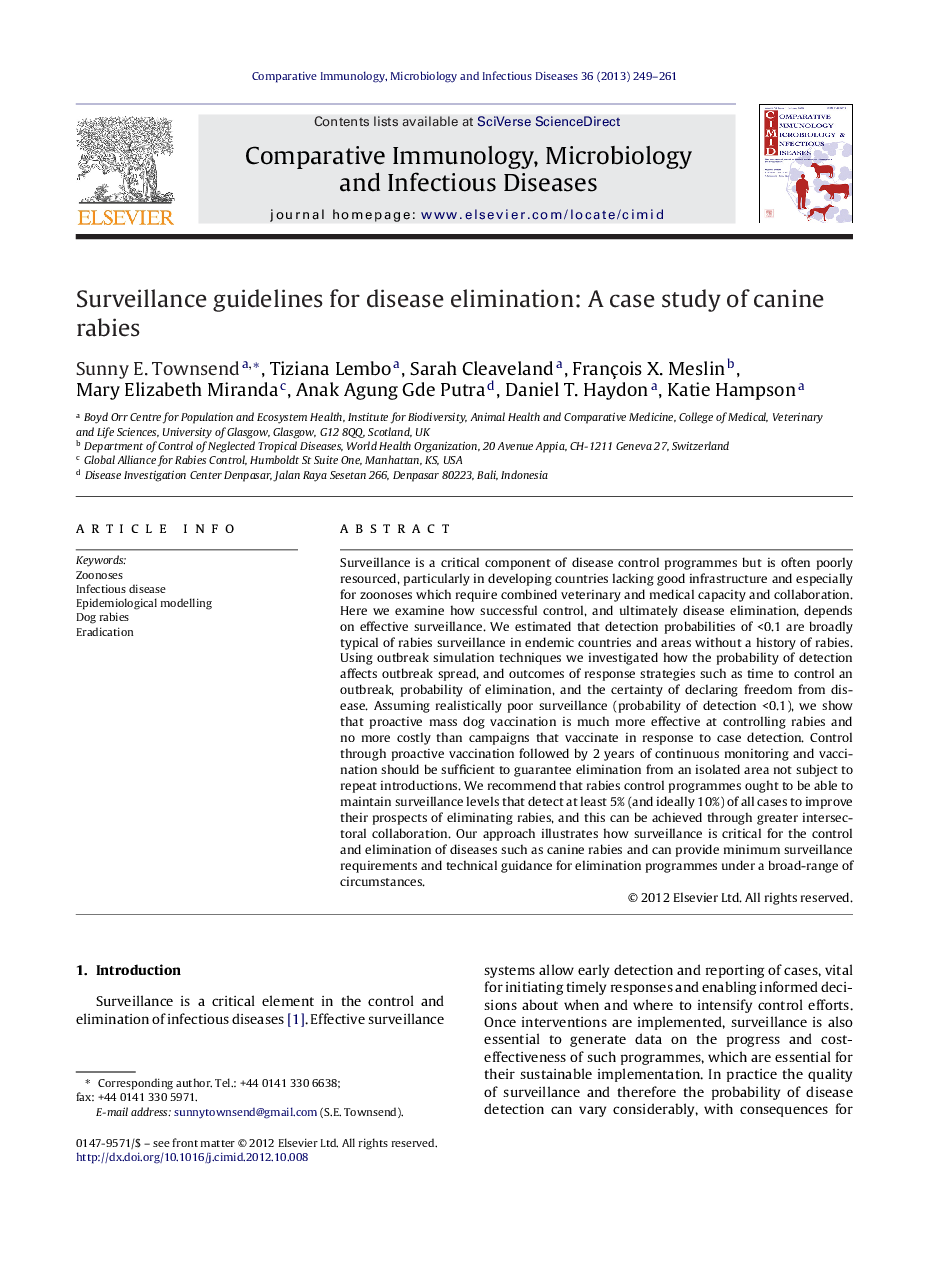| Article ID | Journal | Published Year | Pages | File Type |
|---|---|---|---|---|
| 10971340 | Comparative Immunology, Microbiology and Infectious Diseases | 2013 | 13 Pages |
Abstract
Surveillance is a critical component of disease control programmes but is often poorly resourced, particularly in developing countries lacking good infrastructure and especially for zoonoses which require combined veterinary and medical capacity and collaboration. Here we examine how successful control, and ultimately disease elimination, depends on effective surveillance. We estimated that detection probabilities of <0.1 are broadly typical of rabies surveillance in endemic countries and areas without a history of rabies. Using outbreak simulation techniques we investigated how the probability of detection affects outbreak spread, and outcomes of response strategies such as time to control an outbreak, probability of elimination, and the certainty of declaring freedom from disease. Assuming realistically poor surveillance (probability of detection <0.1), we show that proactive mass dog vaccination is much more effective at controlling rabies and no more costly than campaigns that vaccinate in response to case detection. Control through proactive vaccination followed by 2 years of continuous monitoring and vaccination should be sufficient to guarantee elimination from an isolated area not subject to repeat introductions. We recommend that rabies control programmes ought to be able to maintain surveillance levels that detect at least 5% (and ideally 10%) of all cases to improve their prospects of eliminating rabies, and this can be achieved through greater intersectoral collaboration. Our approach illustrates how surveillance is critical for the control and elimination of diseases such as canine rabies and can provide minimum surveillance requirements and technical guidance for elimination programmes under a broad-range of circumstances.
Related Topics
Life Sciences
Agricultural and Biological Sciences
Animal Science and Zoology
Authors
Sunny E. Townsend, Tiziana Lembo, Sarah Cleaveland, François X. Meslin, Mary Elizabeth Miranda, Anak Agung Gde Putra, Daniel T. Haydon, Katie Hampson,
